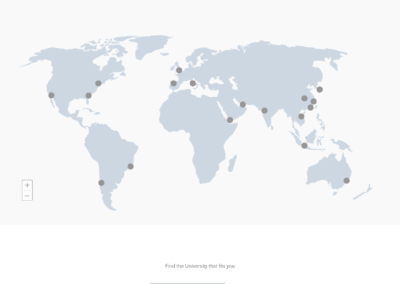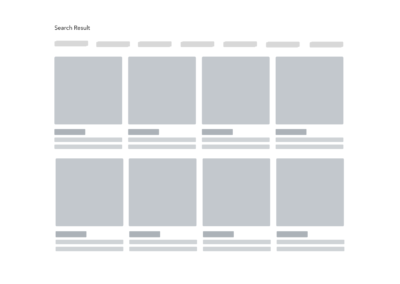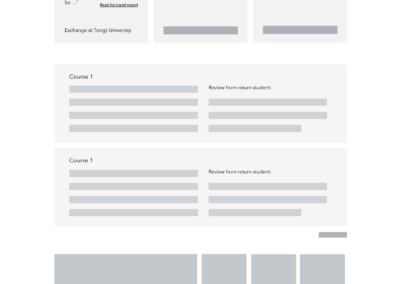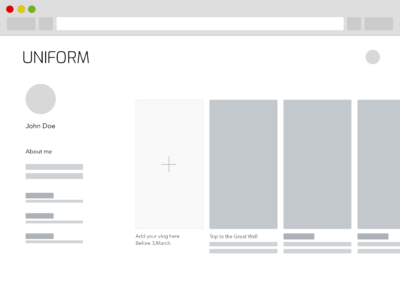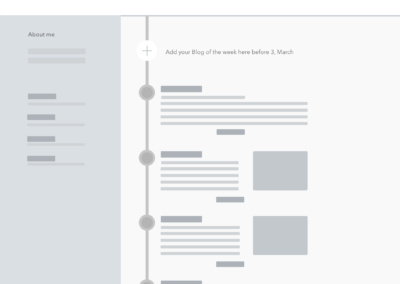UNIFORM
January – April 2019 – Helsinki, Finland
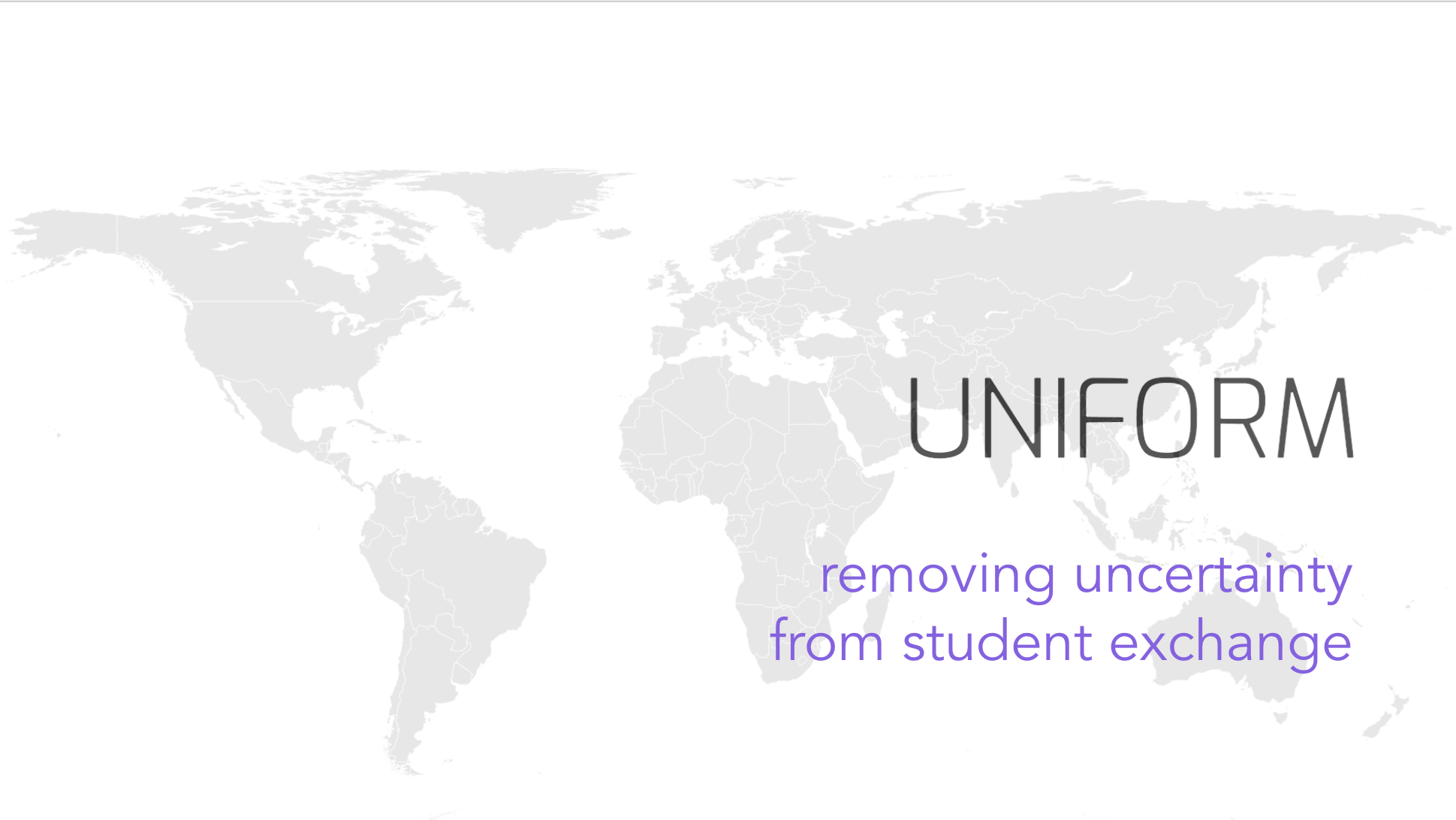
UNIFORM is a startup concept formed during the spring semester at Aalto University in the course, StartUp Experience. The course was structured with CEOs being selected who would then hire a startup team to then find a problem to tackle through the creation of a startup so as to simulate the entrepreneurial process. The course comprised of six sprints, each with a specific goal and deliverables as well as a 5 minute pitch done at the end of the sprint.
The Challenge:
Finding a problem to solve and developing a solution, to then develop a business model and prototype that can be validated and tested in the Finnish context.
My Role(s):
– CEO of the Startup – put the team together based on their diverse range of skills
– Facilitation of design workshops for ideation and synthesis
– User interviews/discussion guide development and conducting
– UI Design and Prototyping in Axure
– Meeting with users, customers for testing and demos
– Social media marketing content
Tools & Methods Used:
– Team workshops for priority matrix, affinity maps, mind-maps, user journey visualisations, brainstorming processes ( brainnwriting)
– User research through in-depth interviews and online questionnares
– Interviews with customers
– Prototype development using Sketch and Axure
– Usability testing with potential users of the platform and demos for customers
The Process:
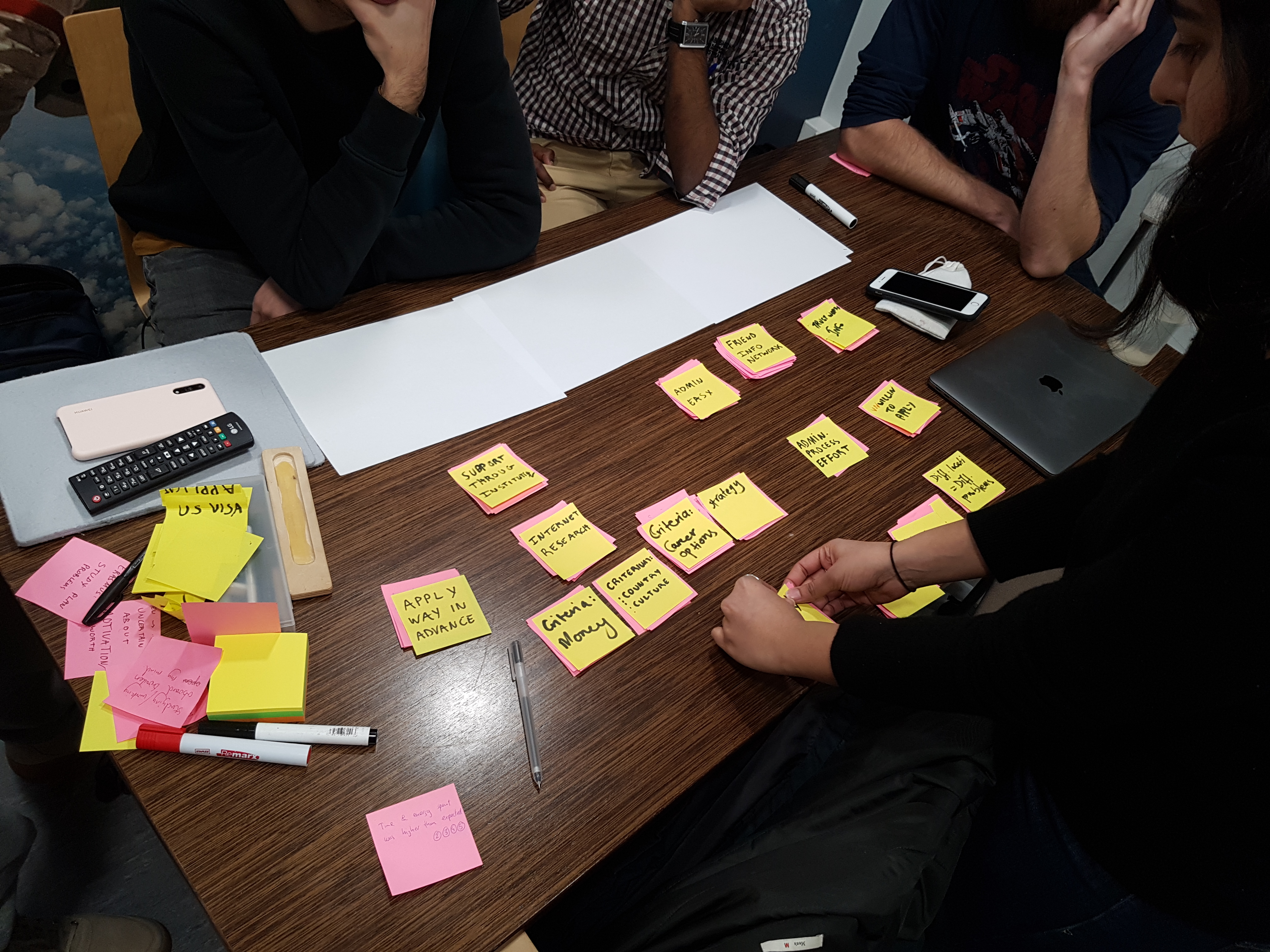
Affinity mapping after gathering insights from interviews
Finding a problem and validating it:
The first two sprints were spent on exploring and identifying the problem we wanted to solve. Our first task was to identify the problem we would want to create a solution for. We brainstormed a list of ideas ranging from topics in education, renting market and mobility. We decided to prioritize the problems using a matrix to vote on certain criteria to help decide the top problem. With this matrix, we found that exploring how the Finnish education system could be exported to other places was the main contender. However, we realised from initial brainstorming that this was more a solution we wanted to export to other places rather than finding a problem. So we decided to look at mobility for young professionals and students instead.
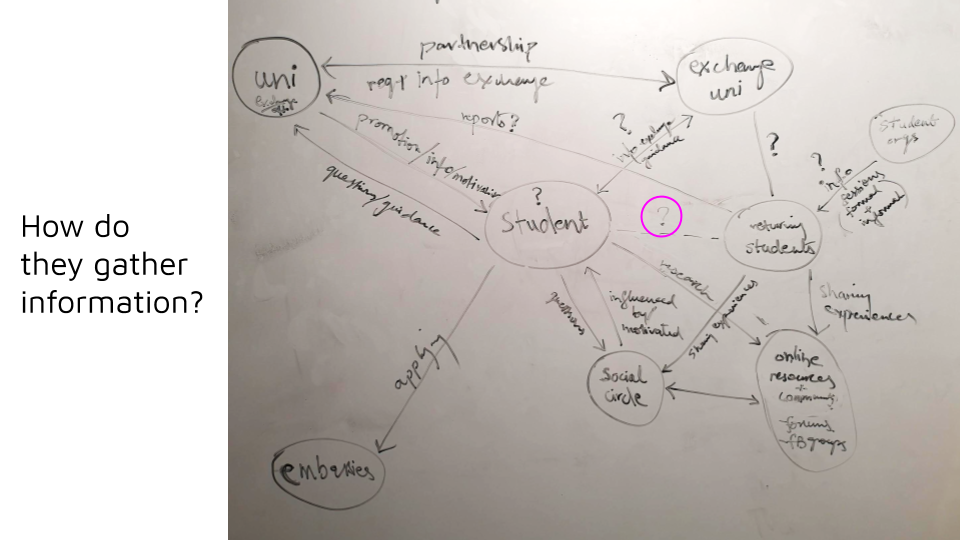
Ecosystem of stakeholders and relationships in student mobility

Mapping out the journey of a student wanting to go on exchange
Students were mainly relying on their friends and network in terms of the information that actually convinced them to go to one place or another. This was crucial in understanding that the current available way people officially got information was not good enough – even if the right information was present, it was hidden away in PDF reports.
The current reporting system did not allow for all the required information to be put in since it was all supposed to be filled into a text report – searching for that information is already time-consuming.
University admin also spent a lot of time looking over the reports but they were never able to ensure that all the information that prospective students are looking for is already in the reports or not.
Personas & Experimentation:
Another part of our research phase included actually asking potential users based on the personas we created to act out the scenarios we set up for them. From what we gathered in the interviews and survey, we were now able to create user groups and personas based on the recurring characteristics of these users that we grouped together.
User Group 1: Prospective Exchange Students
User Group 2: Returning Exchange Students
User Group 3: University Exchange Officials
Using these personas, we asked prospective exchange students to perform a specific task for us in terms of looking for information. We asked them to think aloud as they used the current system. We screen recorded their process and follwoed-up with some questions about what they thought of the procedure and the way they found information and whethe it was good enough.
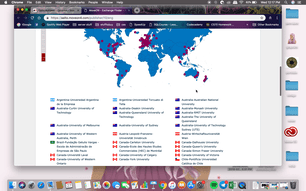
Screengrab of user experiment
Ideating solutions:
Having gathered all the user research and run some experiments, we had a vague idea where our solution was headed but we sat down to do multiple ideation sessions:
– One of which was to decide what to actually build for which we used general brain storming based on our earlier insights. The outcome of this was that we would build a new platform that had a reporting and searching mechanism that could dynamically link and aggregate this information.
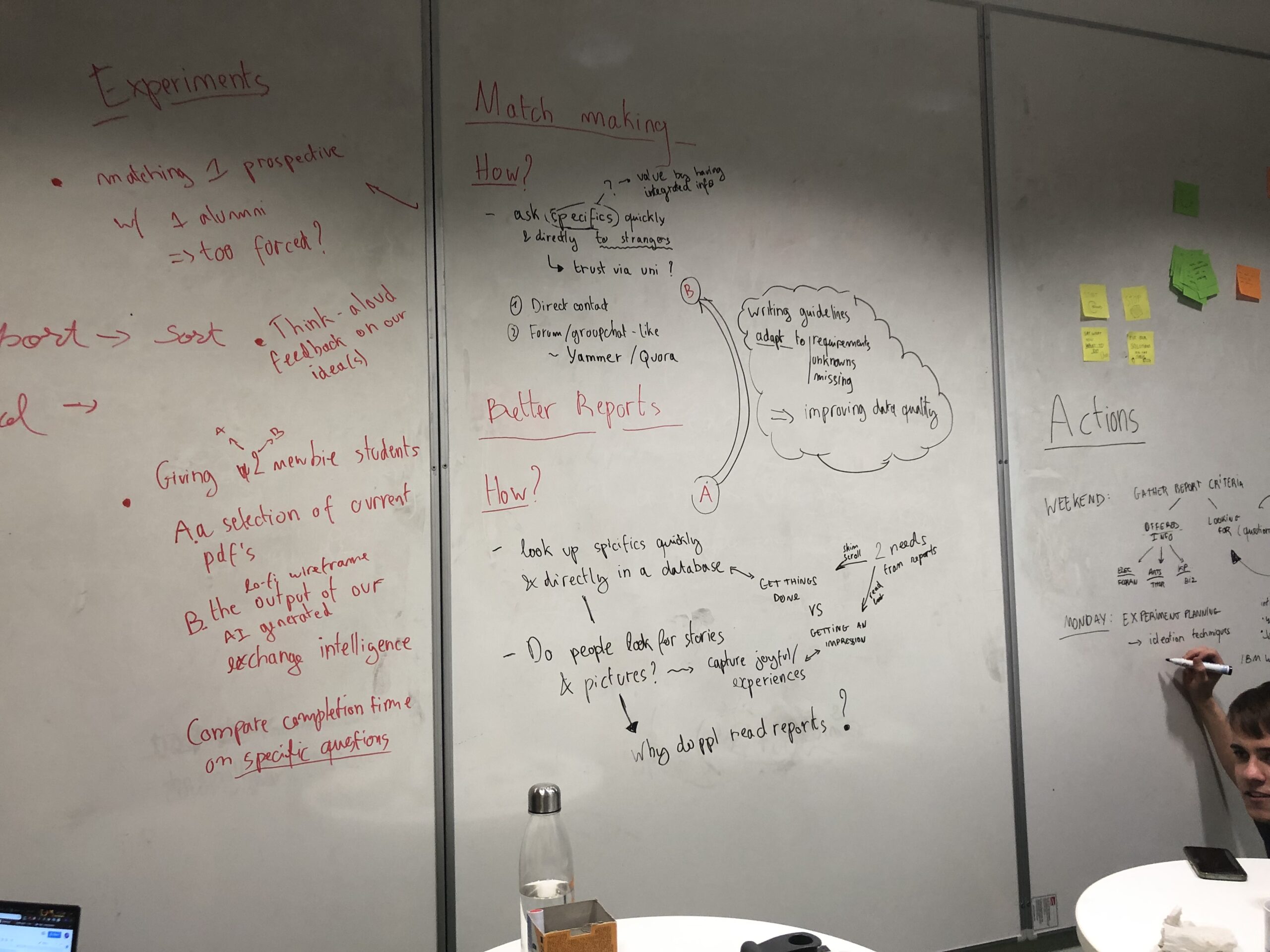
Brainstorming workshop
– One to decide what features to add onto this new platform. We used a form of crazy eights and brain-writing to generate ideas for these features. We then put up the features that were most popular to then help us plan how to develop the prototype.

Crazy eights ideation for features
Prototyping:
After deciding on the the most important features to include we set out to begin developing the prototype in Sketch and Axure. Our goal was to create a prototype that could be tested with potential users and be used as a way to demo to potential customers as well. This is why we chose Axure to build it – so we could have most hi-fidelity prototype possible that could be the closest to the real platform we imagined.
We began with one of our teammates starting with an initial wireframe fro each page we wanted to create. Using that design template we began working in Axure to enhance it further. We split the development into a few parts:
1) The search feature – which was a quiz-like interaction that let potential users customise their search
2) The new and improved page for the universities that contained accurate and aggregated information directly built from the reports left by previous students
3) The reporting dashboard that dynamically followed the exchange process and prompted students to fill in details into specified areas rather than ask them to write a long PDF report


Customer and User Testing:
With the prototype in hand, we set up usability tests and demos with 10 potential users as well as university staff. We recorded these usability tests int eh same way as we ran the experiments earlier to have a consistent comparison for both products. We then followed up with some questions about the experience the users had and we also encouraged them to think aloud as they explored the prototype.
Our feedback to this prototype was positive. All the testers found this platform to be much better than they had seen before or used previously. A few users also helped us to see areas that could improve as well as other features that could be added.
Marketing Video for UNIFORM
The Outcome:
A Hi-fidelity prototype of the UNIFORM platform based on user insight and improving the information gathering and reporting process for exchange procedures at universities. It could be used for future demos and testing with students and university mobility staff together with a complete pitch ready for investors to see with a plan for the next three years.
Final Pitch Deck
